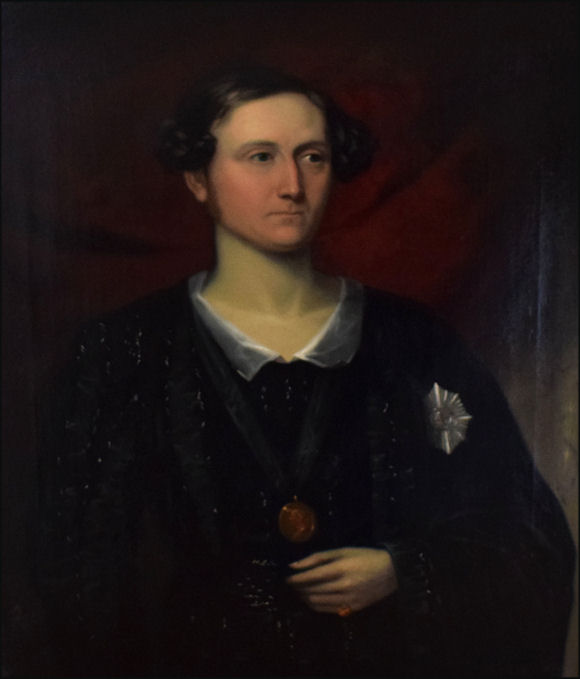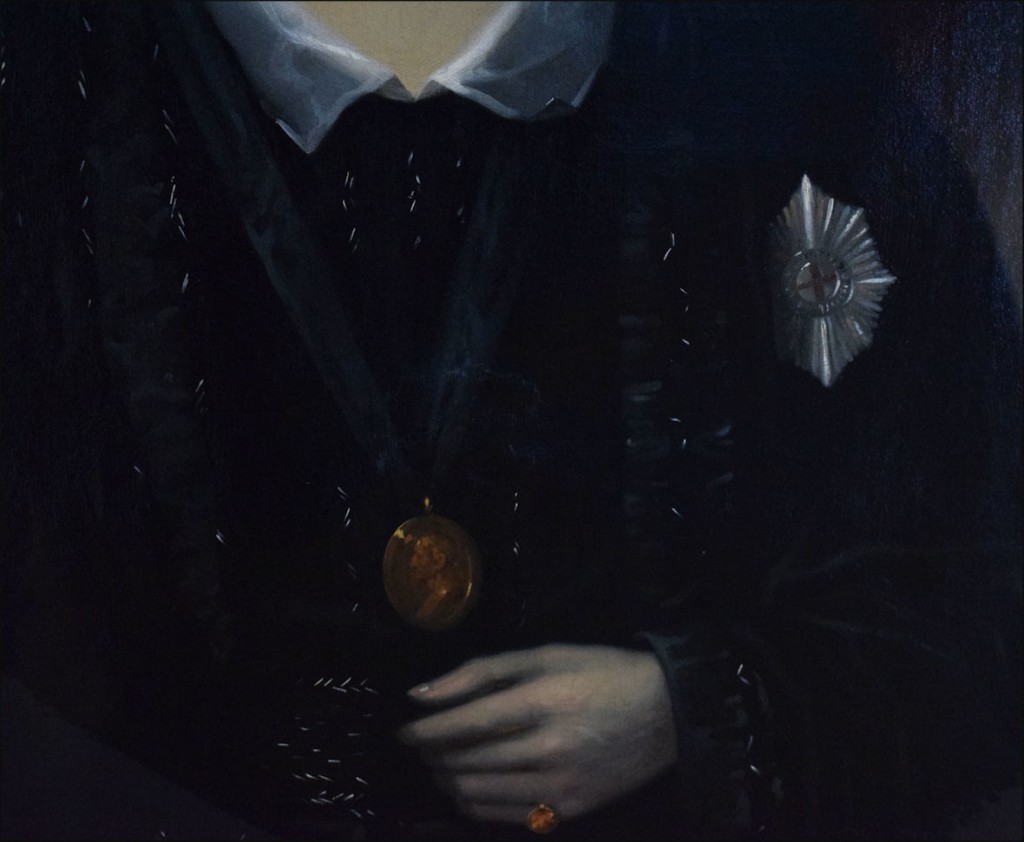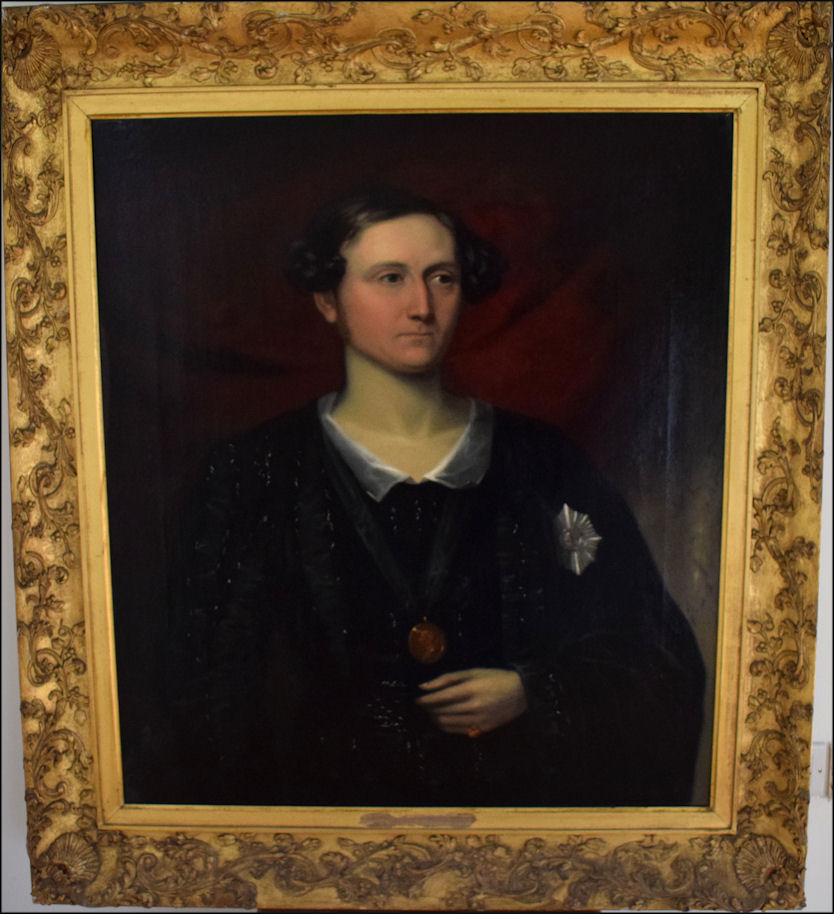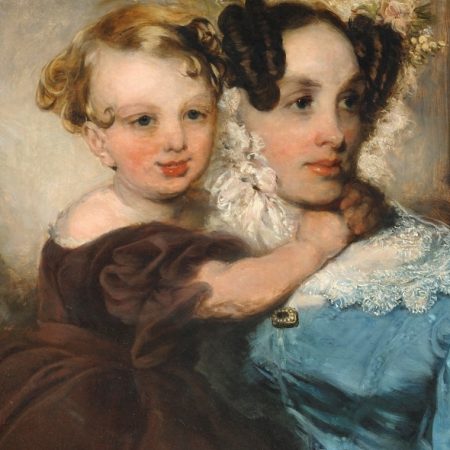Seeking artist attribution for possible portrait of Prince Leopold of Saxe-Coburg-Saalfeld (later King Leopold I of Belgium)

called Prince Leopold of Saxe-Coburg-Saalfeld (later King Leopold I of Belgium), artist unknown. Private collection
A query from a private collector, a member of the Understanding British Portraits professional network:
This portrait of a young man wearing the Order of the Garter and another medallion showing a bronze portrait relief suspended from a blue ribbon has always been known anecdotally as a portrait of ‘Major Blachford’. However Blachford was not awarded the Order of the Garter and I am considering the possible identity of the sitter as Leopold of Leopold of Saxe-Coburg-Saalfeld, as the Order was bestowed on him in 1816, the year he married Princess Charlotte of Wales.
Thoughts on both a possible artist attribution and sitter identity are very welcome. Please use the ‘add a comment’ box below.

called Prince Leopold of Saxe-Coburg-Saalfeld (later King Leopold I of Belgium), artist unknown. Private collection

called Prince Leopold of Saxe-Coburg-Saalfeld (later King Leopold I of Belgium), artist unknown. Private collection




Comments
This looks to be the work of The Spanish Court as Velazdez or Jean Bautista Mazo. The background if the sitter has been commonly used by both artists. I believe your guess of Prince Leopold would also be mine as well.
I am sorry but this is not Prince Leopold: facially there is no resemblance
Hello,
I’m sorry, but I agree with Christopher that it’s not a portrait of Prince Leopold. The likeness is not close at all to known portraits, and though court portraitists would often seek to flatter sitters through gentle changes to appearance, there would be no benefit to changing the nose shape so dramatically. In fact, as Prince Leopold had the “coburg nose” like Queen Victoria and Prince Albert, it would be very unlikely that he would be content to have this sign of his royal legitimacy, familial connections and birthright erased; your picture doesn’t have the nose.
Further, the clothing is does not resemble British or Belgium court clothing from this period. I suspect one of two things is most likely:
1) It is a court portrait, potentially authorised, of someone else who was not Leopold. Possibly someone in the Spanish or, at a push, Portuguese courts, c. 1600-1900, where both this clothing and painting style would be more common, as Liz Strickland suggested. Also possibly of the British court pre-1700 with that flat, falling collar, but I think unlikely. In light of the modesty of the clothing and lack of further decoration or wealth signifiers, likely not a prominent or wealthy person. This is just a guess, and outside my field of research.
2) It is an unauthorised portrait of Leopold I, likely produced retroactively due to the various anachronisms, poor likeness, and strong identity markers, such as the Order you identified. In which case, his unusual dress combined with the generic background is likely intended to reference his 1817 widowhood, and is probably borrowing from his niece Queen Victoria’s mourning portraits (e.g. Graefle, 1864, RCT). However, the clothing is similar but inaccurate to regency/nineteenth century men’s clothing. 19th century mourning dress was highly gendered: women widows’ second mourning would consist of full black dress with white collars; men widowers of the 18th and 19th century would only wear a black armband. Further, due to developments in black dye technology and cultural changes in the mid century, the wearing of black suits by all men at all for professional, social or mourning purposes was not common in Britain (where Leopold lived at the time of and well into his widowhood) until after Leopold I’s death. See: John Harvey, Men In Black (1997), Lou Taylor, Mourning Dress (1983).
I hope this was helpful to you, and I’m sorry I couldn’t agree with your theory.